#interior design college
Text
What are the 5 Basics of Interior Design?

Interior design is the art of transforming spaces into functional and aesthetically pleasing environments. Whether you're revamping your home or considering a career in interior design, understanding the fundamentals is key. In this blog, we'll unravel the five basics of interior design that serve as the foundation for creating captivating and well-balanced spaces.
Space Planning:
At the core of interior design is the strategic allocation and arrangement of space. Space planning involves determining the optimal layout for a room, considering factors such as functionality, traffic flow, and furniture placement. It's about finding the right balance between an open and inviting atmosphere while maximizing the utility of every square foot.
Color Harmony:
Colors have a profound impact on the mood and atmosphere of a space. Establishing color harmony involves selecting a cohesive color palette that complements the purpose of the room and reflects the desired ambiance. Whether it's a calming monochromatic scheme, a bold complementary palette, or a neutral backdrop with accent colors, the right color harmony can transform a space.
Furniture and Furnishings:
Choosing the right furniture and furnishings is a crucial aspect of interior design. Consider the scale, proportion, and style of furniture to ensure it aligns with the overall design concept. The arrangement of furniture should facilitate easy movement and conversation while enhancing the visual appeal of the space. Thoughtful selection of furnishings, including rugs, lighting, and accessories, adds layers of texture and personality.
Lighting Design:
Lighting is a design element that can dramatically influence the mood and functionality of a space. A well-lit room considers natural and artificial lighting sources to create a balanced and inviting ambiance. Lighting design involves selecting fixtures that complement the overall aesthetic, as well as strategic placement to highlight architectural features and focal points.
Texture and Patterns:
Texture and patterns add depth and visual interest to interior spaces. Incorporating a variety of textures, such as smooth surfaces, plush fabrics, and tactile materials, creates a sensory-rich environment. Similarly, patterns, whether through wallpapers, textiles, or artwork, contribute to the overall design narrative. Balancing the use of texture and patterns ensures a harmonious and visually engaging interior.
Explore Interior Design at IIFD:
Unlock the doors to the world of interior design at the best Interior Design College in India like IIFD - Indian Institute Of Fashion & Design (@iifd). IIFD courses are crafted to provide aspiring designers with the skills, knowledge, and industry insights needed to excel in the dynamic field of interior design.
Visit IIFD - Indian Institute Of Fashion & Design official website or contact at +91 9041766699 to learn more about how IIFD can guide you on your path to mastering the basics of interior design. The Indian Institute of Fashion and Design (IIFD) offers comprehensive courses that seamlessly blend creativity with technical expertise. Your journey to creating harmonious and captivating spaces begins with IIFD!
#Basics of Interior Design#Basics of Interior#Basics of Interior Designing#Basics of Design#iifd#education#iifd chandigarh#careers#Interior Designing#Interior Design College#Interior Design careers
3 notes
·
View notes
Text

Design Your Dream Career with a Diploma in Interior Design at IDI Institute Himayatnagar
Do you envision yourself creating beautiful, functional spaces that leave a lasting impression? The Diploma in Interior Design at IDI Institute Himayatnagar is your gateway to turning that vision into reality. This program offers a thorough exploration of design concepts, from understanding client needs and space utilization to mastering the art of selecting colors, materials, and furnishings. At IDI, you'll gain hands-on experience through practical projects and workshops, allowing you to refine your skills under the mentorship of seasoned professionals. Whether you're looking to design luxurious homes, innovative offices, or trendy retail spaces, this diploma will provide you with the expertise and confidence to excel in the interior design industry. Join IDI Institute Himayatnagar and start shaping the spaces of tomorrow.
Institute Address :
3-6-475/7, 4th Floor, Kalpa Vruksha Estates,
Above HDFC Bank, Opp. Vasu Medical,
Himayath Nagar Main Road, Hyderabad – 500 029.
Ph: +919885099577, +918074731441
#Interior Design Course#Interior Design Institute#Interior Design College#Diploma in Interior Design#Interior Design institutes in Hyderabad#Abids#Dilsuknagar#Attapur#Himayatnagar#Alwal
1 note
·
View note
Text
Resources for Interior Design Colleges: Libraries, Studios, and Labs
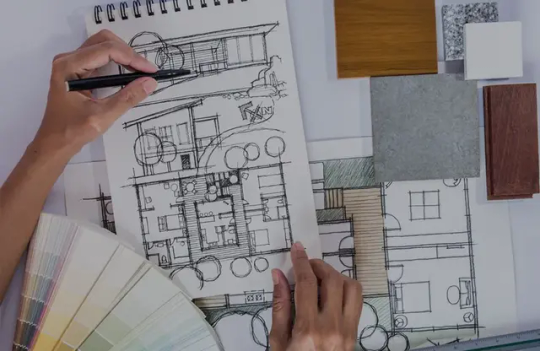
Interior design colleges provide students with the knowledge, skills, and experiences they need to succeed in the dynamic world of design. Central to this education are the resources available to students – from libraries filled with design inspiration to state-of-the-art studios and labs equipped with the latest technologies. In this article, we'll take a closer look at the essential resources for interior design colleges, highlighting how these resources foster creativity, innovation, and excellence in design education. Plus, if you're considering pursuing your interior design education with a reputable institution, don't forget to explore the resources available at the Indian Institute of Fashion & Design (IIFD) Kolkata.
Libraries:
Libraries are invaluable resources for interior design colleges, providing students with access to a wealth of design literature, periodicals, journals, and digital resources. These collections offer inspiration, research materials, and references for design projects, history, theory, and current trends. Many interior design colleges curate specialized collections focusing on architecture, interior design history, furniture design, materials, sustainability, and more. Additionally, libraries often offer quiet study spaces, research assistance, and interlibrary loan services to support students' academic pursuits.
Studios:
Design studios are the heart of interior design colleges, where students bring their creative visions to life through hands-on projects, experimentation, and collaboration. These spaces provide students with dedicated areas to sketch, draft, model, and prototype their design concepts using traditional and digital tools. Equipped with workstations, drafting tables, drawing boards, modeling materials, and presentation tools, design studios foster a dynamic and inspiring environment for creativity and innovation. Additionally, studios often serve as hubs for critique sessions, design reviews, workshops, and guest lectures, enriching students' learning experiences and fostering a sense of community and camaraderie among peers.
Labs:
Technology plays a crucial role in modern interior design education, and labs provide students with access to cutting-edge tools and software to support their design process. Computer labs equipped with industry-standard software such as AutoCAD, Revit, SketchUp, Adobe Creative Suite, and 3D modeling/rendering programs allow students to visualize and communicate their design ideas effectively. Fabrication labs equipped with laser cutters, 3D printers, CNC machines, and other prototyping tools enable students to create physical models, prototypes, and mock-ups of their designs. These labs provide students with opportunities to explore new techniques, experiment with materials, and push the boundaries of design innovation.
Material Libraries:
Material libraries are essential resources for interior design colleges, providing students with access to a wide range of materials, finishes, textiles, and samples for design projects. These libraries allow students to explore and compare different materials' textures, colors, properties, and sustainability characteristics, informing their material selection and specification decisions. Material libraries often collaborate with industry partners, manufacturers, and suppliers to curate up-to-date collections and host workshops, presentations, and material demonstrations for students. By engaging with material libraries, students gain practical knowledge and hands-on experience in materiality, fabrication, and construction techniques, enhancing their design skills and understanding.
Conclusion:
Resources such as libraries, studios, labs, and material libraries are essential pillars of interior design colleges, providing students with the tools, inspiration, and support they need to excel in their design education. By leveraging these resources, students can unleash their creativity, explore new ideas, develop technical skills, and realize their design visions. And if you're considering pursuing your interior design education with a reputable institution, don't forget to explore the resources available at the Best Interior Design College in Kolkata like the Indian Institute of Fashion & Design - IIFD Kolkata. With its commitment to providing students with access to state-of-the-art facilities, expert faculty, and industry connections, IIFD Kolkata offers a dynamic and inspiring environment for aspiring designers to thrive and succeed in the competitive world of interior design.
#iifd#education#careers#iifd kolkata#Interior Design#Interior Designing#Interior Design Education#Interior Design College#interiors#Education
1 note
·
View note
Text
Choosing the Right Interior Design College in India

Embarking on a journey in interior design is an exciting endeavor, but selecting the right college can significantly impact your educational experience and future career prospects. With numerous options available across India, making the right choice requires careful consideration of various factors. In this article, we'll explore essential considerations for choosing the right interior design college and why the Indian Institute of Fashion & Design (IIFD) stands out as a premier institution in the field.
Understanding Your Goals:
Before diving into the search for an interior design college, it's crucial to clarify your goals and aspirations. Consider factors such as:
Career Objectives: Are you interested in residential design, commercial spaces, hospitality, retail, or specialized areas like sustainable design or set design?
Learning Style: Do you prefer hands-on learning experiences, theoretical coursework, or a combination of both?
Location: Are you looking for colleges in specific cities or regions that offer unique opportunities or align with your personal preferences?
Accreditation: Does the college hold accreditation from relevant educational bodies, ensuring the quality and recognition of its programs?
Researching Interior Design Colleges:
Once you've identified your goals, conduct thorough research on interior design colleges in India. Consider the following factors during your evaluation process:
Academic Reputation: Look for colleges with a strong reputation for academic excellence, experienced faculty members, and industry connections.
Curriculum and Specializations: Evaluate the curriculum offered by each college, including core courses, electives, and opportunities for specialization in areas of interest.
Facilities and Resources: Assess the facilities and resources available, such as design studios, computer labs, libraries, and material workshops, to support your learning and creative endeavors.
Industry Engagement: Research colleges that actively engage with the design industry through guest lectures, workshops, internships, and industry collaborations, providing valuable exposure and networking opportunities.
Alumni Success: Explore the achievements and success stories of alumni from each college, as they reflect the effectiveness of the institution in preparing students for successful careers in interior design.
Why Choose IIFD:
The Indian Institute of Fashion & Design (IIFD) emerges as a leading choice for aspiring interior designers, offering a comprehensive educational experience tailored to meet industry demands and student aspirations. Here's why IIFD stands out:
Industry-Relevant Curriculum: IIFD's interior design programs feature a carefully crafted curriculum that blends theoretical knowledge with practical skills, preparing students for diverse career paths within the field.
Experienced Faculty: Our faculty members are seasoned professionals and experts in their respective domains, providing mentorship, guidance, and real-world insights to students throughout their academic journey.
State-of-the-Art Facilities: IIFD boasts modern facilities equipped with the latest technology and resources, including design studios, computer labs, material libraries, and exhibition spaces, fostering a conducive learning environment for creativity and innovation.
Industry Partnerships: We have established strong partnerships with leading design firms, industry organizations, and professionals, facilitating internships, industry projects, and networking opportunities for our students.
Alumni Success Stories: Our alumni have made significant contributions to the design industry, showcasing the effectiveness of IIFD's education in shaping successful careers and fostering creative excellence.
Conclusion:
Choosing the right interior design college in India is a critical step towards achieving your career aspirations and unleashing your creative potential. By carefully considering factors such as academic reputation, curriculum, facilities, industry engagement, and alumni success, you can make an informed decision that aligns with your goals and aspirations. With its commitment to excellence, industry relevance, and student success, IIFD - Indian Institute of Fashion & Design (@iifd) emerges as one of the best Interior Design Colleges in India for aspiring interior designers seeking a transformative educational experience and a pathway to success in the dynamic world of interior design.
Ready to embark on your journey in interior design with IIFD? Contact IIFD today to learn more about our interior design programs, admissions process, and how IIFD can help you achieve your goals and unleash your creative potential in the exciting field of interior design.
#Interior Design College in India#Interior Design Colleges in India#Interior Design#Interior Design College#Design College#Colleges#Education#India#Chandigarh#IIFD#iifd chandigarh#careers#interior designing
0 notes
Text
Career in Interior Designing Course in Mumbai
If you are looking for an opportunity to chase your dream career, that might end right here. Join the Interior Designing Course offered by NAFDI Interior School today and get a chance to learn from experienced trainers with an updated curriculum🥳.

You will learn how to design attractive and functional spaces with established designs and standards.
Register Today and Learn More!!
For more details follow our page👍.
Call us: +91 8645-06-5555
#education#interior design college#interior design courses#interior design institutes#interior design
0 notes
Text
Your Design Journey Post-12th Starts Here
Introduction:
Have you recently finished your 12th grade and find yourself drawn to the world of design and creativity? Well, you're in luck, because the exciting realm of interior design is just a step away! Interior design is so much more than just making spaces look pretty. It's about crafting environments that are as functional as they are stylish, ones that echo personal stories and preferences. For those of you in Mumbai, a bustling hub of innovation and style, exploring interior design courses after 12th can be the perfect start to a thriving career. These courses are not just educational paths; they are journeys into the heart of design, blending artistic flair with practical skills. So, if you're pondering over what to do after your 12th and have a keen eye for design, interior design courses after 12th in Mumbai are your ticket to a world where creativity meets career

1. Why Choose Interior Design?
Why leap into interior design after your 12th? It's simple! Interior design isn't just about picking out pretty furniture. It's a deep dive into understanding and fulfilling people's needs through design. By pursuing interior design courses after 12th, you're opening doors to a world where your creativity transforms everyday spaces into extraordinary ones. Whether it's cozy homes, buzzing offices, or lively public areas, your touch can turn them into functional pieces of art. This field is a playground for the creative, the detail-minded, and those who find joy in bringing design dreams to life. So, if you're fresh out of 12th grade and design is your call, these courses are your starting line.
2. What to Expect from Interior Design Courses After 12th
Choosing the right course is crucial. In Mumbai, the heart of India's design industry, interior design courses offer a blend of theoretical knowledge and practical exposure. These courses cover various aspects of design, including space planning, material selection, environmental sustainability, and digital design tools. Most importantly, they provide hands-on experience, preparing you for real-world challenges.
3. Balancing Quality and Affordability: Interior Design Course Fee
Thinking about the cost of interior design courses after 12th? You're not alone. In Mumbai, the good news is that you can find a course that fits your budget and still delivers top-notch quality. The fees for interior design courses after 12th vary depending on the institute and the length of the program. But no matter your choice, expect a blend of thorough training, real-world industry insights, and solid career support. This is an investment in your future, ensuring that you get the most value for your money while stepping into the exciting world of interior design.
4. Why INIFD Kalyan Stands Out in Mumbai
At INIFD Kalyan, we take pride in our comprehensive curriculum and industry-aligned training. Our courses are designed to cater to the evolving needs of the interior design industry. With experienced faculty, state-of-the-art facilities, and strong industry connections, we offer an educational experience that balances academic rigor with practical skills.
5. Career Opportunities and Placement Support
Upon completing your course, a range of career paths will be open to you. From residential to commercial design, event styling to sustainable design, the possibilities are endless. At INIFD Kalyan, we don’t just educate; we ensure that our students are industry-ready. Our dedicated placement cell offers robust support to help you find your dream job in top design
firms and studios. With our strong network and industry reputation, you’re not just starting a course; you’re stepping into a promising career.
6. Navigating the Course Selection
Choosing the right interior design course after 12th can seem daunting. At INIFD Kalyan, we offer guidance to help you select a program that aligns with your career goals. Whether it's a diploma, a bachelor's degree, or a specialization program, we have you covered. Our counselors are here to help you understand the scope and potential of each course, ensuring you make an informed decision.
7. The INIFD Kalyan Advantage: Workshops and Mentorship
What sets INIFD Kalyan apart are our regular workshops and celebrity mentorships. These sessions provide insights into the latest trends, hands-on experience, and a chance to learn from the industry’s best. This holistic approach ensures that you’re not just learning; you’re absorbing knowledge from leading experts.
8. Global Exposure and Learning Opportunities
At INIFD Kalyan, we believe in global exposure. Our students have showcased their talents at prestigious platforms like the Lakme Fashion Week, gaining unparalleled exposure and experience. This international outlook equips our students to think globally and design universally.
9. Your Creative Journey Begins Here
Embarking on your journey in interior design is an exciting decision. At INIFD Kalyan, we are committed to nurturing your talent and helping you achieve your design aspirations. Our courses in Mumbai are tailored to provide a balance of creativity, technical skills, and industry insights, making your learning journey comprehensive and fulfilling.
10. Connect With Us
Ready to start your journey in interior design? Connect with us at INIFD Kalyan to learn more about our courses, fee structures, and how we can help turn your passion for design into a successful career.
Conclusion:
Embarking on interior design courses after 12th is more than starting a career; it's about answering a call to beautify and functionally enhance our world. Right after your 12th, with the right course and mentorship, you step into a vibrant and ever-evolving field. At INIFD Kalyan, we're here to nurture your dreams and equip you with the skills to reshape spaces and lives. So, if you're ready to leave your mark in the world of design, join us. Together, we'll turn your passion for interior design into a promising future, starting right after your 12th.
#interior design course after 12th#interior design courses#INIFD Kalyan#interior design after your 12th#interior design college
1 note
·
View note
Text
A Guide to Interior Design from Concept to Creation
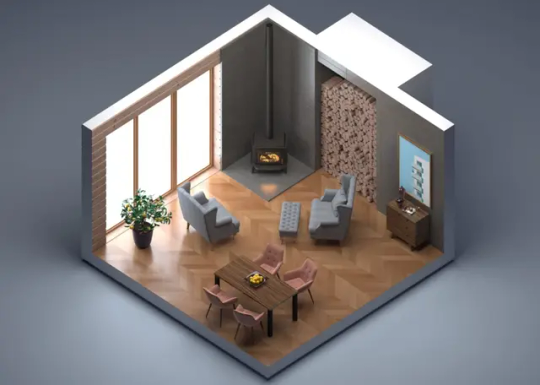
Interior design is a fascinating journey that begins with a simple sketch and evolves into a meticulously crafted space that reflects the vision, personality, and lifestyle of its occupants. From concept development to space planning and final execution, every step of the design process is infused with creativity, innovation, and attention to detail. Let's embark on a journey from sketch to space and explore the concepts and principles that guide the creation of captivating interior environments.
Concept Development
The journey of interior design begins with a spark of inspiration – a concept that sets the tone and direction for the entire project. Whether it's a theme inspired by nature, a historical period, or a client's personal story, the concept serves as a guiding vision that informs design decisions and unifies the space. Designers draw upon their creativity, research, and imagination to develop concepts that are both compelling and relevant to the project brief, laying the foundation for a cohesive and harmonious design.
Space Planning
Once the concept is established, designers move on to the critical task of space planning – the art of arranging furniture, fixtures, and functional elements within the space to optimize flow, functionality, and efficiency. Through careful analysis of spatial requirements, traffic patterns, and ergonomic considerations, designers create layouts that maximize the usability and comfort of the space while maintaining aesthetic balance and visual interest. Space planning is a meticulous process that requires attention to detail and a deep understanding of human behavior and interaction with the built environment.
Material Selection
Materials play a pivotal role in interior design, influencing the look, feel, and ambiance of a space. From flooring and wall finishes to furniture and accessories, every material choice contributes to the overall aesthetic and sensory experience of the space. Designers consider factors such as durability, sustainability, and maintenance requirements when selecting materials, ensuring that they not only enhance the visual appeal of the space but also meet the functional and practical needs of the occupants.
Lighting Design
Lighting is an essential element of interior design that can dramatically affect the mood, atmosphere, and functionality of a space. Designers employ a variety of lighting techniques, including ambient, task, and accent lighting, to create layers of illumination that enhance the visual appeal and functionality of the space. By carefully considering the placement, intensity, and color temperature of light fixtures, designers can manipulate the perception of space, highlight architectural features, and evoke different emotions within the environment.
Final Execution
The culmination of the interior design journey is the realization of the concept into a tangible, livable space. Through collaboration with architects, contractors, craftsmen, and artisans, designers oversee the implementation of their vision, ensuring that every detail is executed to perfection. From sourcing furnishings and accessories to coordinating construction and installation, designers oversee every aspect of the project, bringing the concept to life and transforming sketches into spaces that inspire, delight, and enrich the lives of their occupants.
Your Journey Begins at IIFD
At IIFD - Indian Institute of Fashion and Design, we believe in the transformative power of interior design and the endless possibilities it offers for creative expression and innovation. IIFD interior design courses are designed to equip students with the skills, knowledge, and confidence needed to embark on a journey of exploration and discovery in the world of design. With a curriculum that emphasizes conceptual thinking, hands-on experience, and industry exposure, IIFD prepares students to transform sketches into spaces that captivate the imagination and leave a lasting impression.
Are you ready to embark on a journey from sketch to space and unleash your creativity in the world of interior design? Explore interior design programs at Interior Designing Colleges in India like IIFD - Indian Institute of Fashion & Design (@iifd) and take the first step towards a fulfilling and rewarding career in design.
Visit or Contact IIFD today to learn more about the courses and start your journey towards becoming a skilled and visionary interior designer.
#Interior Design#Guide#iifd#education#careers#career#tips#how to#Interior Designer#home & lifestyle#home decor#iifd chandigarh#interior designing#interior design college
0 notes
Text
Dare To Design With IIFD
Call us for more info at +91-9041766699. Follow us @iifd
#dare to design#iifd#iifd chandigarh#fashion design college#interior design college#textile design college#education#chandigarh
0 notes
Text
Interior Design: From Vision to Reality
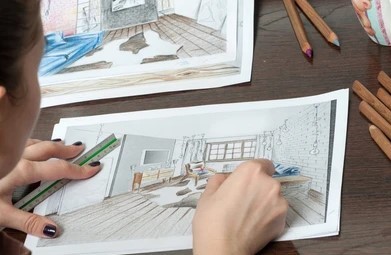
Interior design is a transformative journey that takes an abstract vision and turns it into a tangible, lived experience. From conceptualization to execution, this dynamic process involves a myriad of creative decisions, technical considerations, and a keen understanding of the occupant's needs. Let's embark on a journey that unveils the intricate steps involved in bringing an interior design vision to life.
The Visionary Phase:
Every design journey begins with a vision – a concept that encapsulates the desired look, feel, and functionality of a space. Designers draw inspiration from various sources, creating mood boards, sketches, and conceptual renderings to articulate their ideas. This phase is a playground of creativity, where the seeds of a unique design identity are sown.
The Practical Considerations:
While creativity fuels the vision, practical considerations ground it in reality. Designers must assess the functional needs of the space, consider budget constraints, and factor in any structural or architectural limitations. Balancing the aesthetic vision with these practical elements ensures that the design is not only beautiful but also feasible.
Design Development:
With the vision refined and practicalities considered, the design takes shape in greater detail. Design development involves creating more comprehensive drawings, specifying materials, and finalizing color schemes. It's the phase where the abstract vision starts to acquire a tangible form, laying the groundwork for the next crucial step.
Technical Execution:
The transition from vision to reality requires a seamless execution of technical aspects. This includes detailed construction drawings, specifications for materials and finishes, and collaboration with architects, contractors, and other professionals. Precision is paramount to ensure that the design is translated accurately into the physical space.
Bringing Materials to Life:
Selecting materials is a pivotal step in bridging the gap between vision and reality. Designers choose fabrics, finishes, and furnishings that not only align with the aesthetic vision but also meet quality and durability standards. The tactile and visual aspects of materials contribute significantly to the overall design experience.
Installation and Finishing Touches:
As construction progresses, the vision takes a giant leap towards reality. Installation of furniture, fixtures, and decorative elements brings the design to life. The finishing touches – accessories, artwork, and lighting – elevate the space, adding layers of personality and character.
Client Collaboration:
Throughout the process, collaboration with the client is essential. Designers ensure that the evolving design aligns with the client's expectations and preferences. Regular communication and feedback loops allow for adjustments, ensuring that the final result not only meets but exceeds the client's vision.
The Unveiling:
The culmination of the interior design journey is the grand unveiling of the transformed space. As doors open to the finished design, the vision that once existed in the designer's imagination becomes a tangible reality. The emotions, functionality, and aesthetics blend harmoniously, creating an environment that speaks to both the designer's creativity and the client's aspirations.
Conclusion:
Interior design, from vision to reality, is a testament to the power of creativity and collaboration. It is a process where ideas come to life, spaces are transformed, and the ordinary becomes extraordinary. Each step, from conceptualization to unveiling, is a celebration of the intricate dance between imagination and execution. In the world of interior design, the journey from vision to reality is a masterpiece in itself.
Join One of the best Interior designing colleges in India, IIFD - Indian Institute of Fashion and Design (@iifd), and immerse yourself in an educational experience that stays ahead of design trends. Enroll now to unleash your creativity and become part of the future of spacious living with IIFD – where innovation meets education.
#Interior Design#Interior Designing#Interior Design course#Interior Design courses#Interior Design college#Interior Design colleges#Interior Design education#Interior Design careers#careers#iifd#education#iifd chandigarh
0 notes
Text

Coleman Library, Tougaloo College. Jackson, Mississippi. Gunnar Birkerts.
#brutalist#brutalism#architecture#interior#interiors#design#university#college#tougaloo#mississippi#jackson#gunnar birkerts#library
2K notes
·
View notes
Text
Spacious Living: A Look at the Future

As urban landscapes evolve, so do our notions of living spaces. The future holds a promise of spacious living that goes beyond square footage, envisioning homes that embrace openness, functionality, and a harmonious connection with the environment. Join us as we explore the trends and innovations shaping the future of spacious living.
Open-Concept Designs:
The future of spacious living is characterized by open-concept designs that break down traditional barriers. Walls are replaced with fluid transitions between living, dining, and kitchen areas, creating an expansive, airy ambiance. This trend not only enhances the visual spaciousness but fosters a sense of connectivity among family members and guests.
Multi-Functional Spaces:
Versatility is key in the future of spacious living. Spaces are designed with multi-functionality in mind, ensuring that every square foot serves a purpose. Furniture is modular, allowing for easy transformation of rooms to adapt to various activities. The result is homes that effortlessly accommodate diverse needs without compromising on aesthetics.
Innovative Storage Solutions:
Efficient storage is integral to spacious living. The future brings forth innovative storage solutions that are seamlessly integrated into the design. From hidden cabinets and built-in shelves to furniture with concealed storage compartments, these solutions declutter spaces, promoting a clean and uncluttered environment.
Natural Light and Biophilic Design:
Spacious living is not just about physical space; it's about creating a connection with the outdoors. Future homes are designed to maximize natural light, with large windows and skylights becoming standard features. Biophilic design principles, incorporating nature into living spaces, enhance well-being by fostering a connection with the natural environment.
Smart Technologies:
The future of spacious living is inherently linked with smart technologies. Homes are equipped with intuitive systems that optimize energy efficiency, security, and convenience. Smart lighting, thermostats, and home automation systems contribute to a seamless and comfortable living experience.
Green and Sustainable Living:
Spacious living in the future is synonymous with green and sustainable practices. From energy-efficient appliances to eco-friendly building materials, homes are designed with a focus on minimizing environmental impact. The integration of sustainable elements not only aligns with global conservation efforts but also promotes healthier living environments.
Ready to embrace the future of spacious living and redefine the way you experience your home? Join the leading Interior designing college in India, IIFD - Indian Institute of Fashion and Design (@iifd) and immerse yourself in an educational experience that stays ahead of design trends. Enroll now to unleash your creativity and become part of the future of spacious living with IIFD – where innovation meets education. Your journey into the transformative world of spacious living awaits. Redefine space with IIFD!
#iifd#education#iifd chandigarh#careers#Interior design course#Interior designing#interior design courses#interiors#interior design college
0 notes
Text

Unlock Your Creativity - Enroll in Our Interior Design Course Today!
Are you passionate about creating beautiful and functional spaces?
Do you have a keen eye for detail and a flair for design? If so, we invite you to explore your creativity and transform your passion into a rewarding career with our Interior Design Course at IDI Institute.
Why Choose Our Interior Design Course?
Expert Instructors: Learn from experienced professionals who are dedicated to helping you succeed.
Hands-On Projects: Apply your knowledge in real-world scenarios and gain practical experience.
State-of-the-Art Facilities: Utilize the latest tools and technology to bring your designs to life.
Career Support: Benefit from our extensive network and resources to kickstart your career in interior design.
Flexible Schedule: Choose from full-time or part-time options to fit your lifestyle.
What You'll Learn:
Fundamentals of interior design and space planning.
Color theory and its impact on design.
Textiles, materials, and furnishings.
Lighting and spatial perception.
Sustainable design practices and trends.
Professional presentation and portfolio development.
Visit our website:
www.idi.co.in
For more detail contact: 9885099577, 8074731441
#interior design courses#interior design institute#diploma in interior designing#dilsuknagar#abids#idi institute#himayatnagar#alwal#interior design college
1 note
·
View note
Text
Trends Shaping the Future of Interior Designing

Interior design is a dynamic field that continuously evolves to reflect the changing tastes, lifestyles, and technological advancements of society. As we step into the future, several trends are shaping the landscape of interior designing, influencing the way spaces are conceived and adorned.
In this article, we'll explore the trends that are set to define the future of interior design, providing a glimpse into the aesthetics and functionalities of tomorrow's living and working environments.
Sustainable Design and Eco-Friendly Materials
Sustainability is no longer a buzzword; it's a fundamental ethos shaping interior design. The future belongs to designers who prioritize eco-friendly materials, energy-efficient systems, and sustainable practices. From recycled materials to low-impact production processes, sustainable design is becoming the cornerstone of modern interiors.
Biophilic Design for Connection with Nature
In an era dominated by technology, there's a growing desire to reconnect with nature. Biophilic design, which incorporates natural elements and patterns into interiors, is gaining prominence. Future spaces will feature more greenery, natural light, and organic shapes to enhance well-being and foster a sense of connection with the natural world.
Smart Homes and IoT Integration
The concept of smart homes is no longer confined to science fiction. With the Internet of Things (IoT), homes are becoming smarter and more interconnected. From smart thermostats and lighting systems to AI-powered home assistants, the future of interior design revolves around creating seamlessly integrated, technologically advanced living spaces.
Flexible and Multifunctional Spaces
The way we live and work is evolving, and so are our spaces. Future interiors will be characterized by flexibility and multifunctionality. Furniture and layouts that adapt to different needs, such as remote work, exercise, and relaxation, will become essential in creating versatile environments that cater to diverse lifestyles.
Emotional Design and Personalization
Interior design is transcending mere aesthetics; it's becoming a form of emotional expression. The future sees a rise in personalized spaces that reflect the individuality and unique tastes of the inhabitants. Designers will focus on creating emotionally resonant environments that go beyond visual appeal to evoke specific feelings and memories.
Minimalism and Timeless Elegance
The timeless appeal of minimalism is expected to endure in the future. Clean lines, uncluttered spaces, and a focus on functionality contribute to a sense of timeless elegance. Minimalist design not only promotes a sense of calm but also aligns with the sustainable and eco-conscious ethos of the future.
Virtual and Augmented Reality in Design
Technological advancements in virtual and augmented reality are revolutionizing the design process. Designers can now create virtual walkthroughs of spaces, allowing clients to experience the design before implementation. This trend enhances communication, improves decision-making, and offers a more immersive design experience.
Artisanal and Handcrafted Elements
As a counterbalance to the digital age, there's a growing appreciation for artisanal and handcrafted elements in interior design. Handmade furniture, bespoke accessories, and unique artisanal pieces add a sense of craftsmanship and authenticity to spaces, creating a connection between the user and the maker.
Crafting Tomorrow's Living Spaces
The future of interior design is a canvas where sustainability, technology, personalization, and a reverence for nature converge to shape spaces that go beyond functionality. Interior designers of tomorrow will navigate this dynamic landscape, creating environments that not only meet the practical needs of inhabitants but also resonate emotionally and reflect the values of a rapidly changing world. As these trends unfold, the future of interior design promises to be a captivating journey into innovation, creativity, and the art of crafting spaces that inspire and delight.
Are you ready to embrace the future of interior design education, where technology meets creativity and innovation? IIFD - Indian Institute of Fashion and Design is one of the best interior design colleges in India and is at the forefront of incorporating cutting-edge technology into its interior design courses. Explore our programs, embark on a journey of digital creativity, and join a community where the future of design is shaped today.
Enroll at IIFD and be prepared to transform spaces with a blend of technological prowess and artistic vision. Your journey toward a tech-infused design future starts here!
#iifd#iifd chandigarh#interior design#interior design courses#interior designing courses#interior design college#education#careers
1 note
·
View note
Text
0 notes
Text
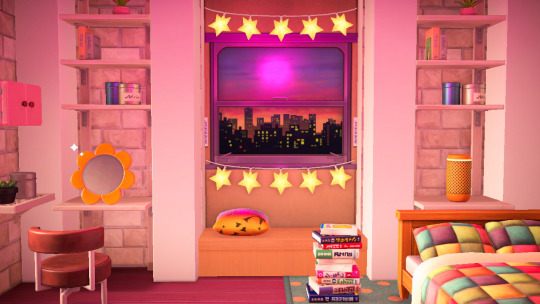
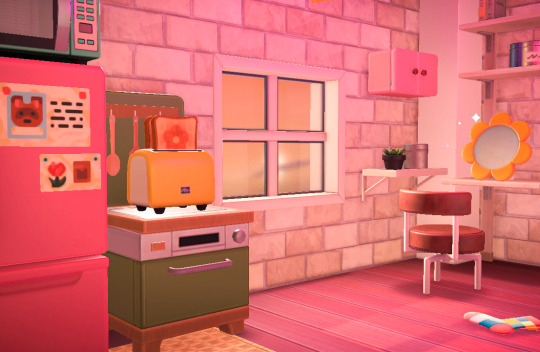
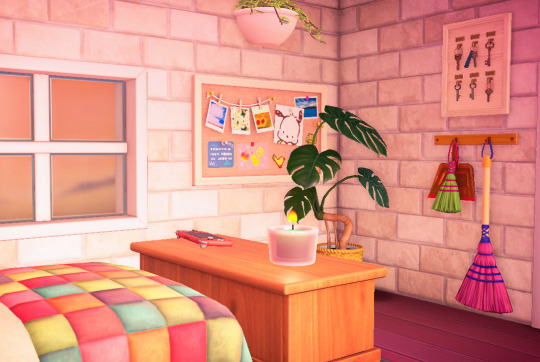

#i’ve been meaning to use the train wallpaper as a window forever#it gives me mad nostalgia cause it looks like my college dorm window and view#acnh#acnh hhp#animal crossing new horizons#animal crossing#hhp#acnh design#acnh inspo#acnh inspiration#acnh interior#acnh villager houses#acnh room
825 notes
·
View notes